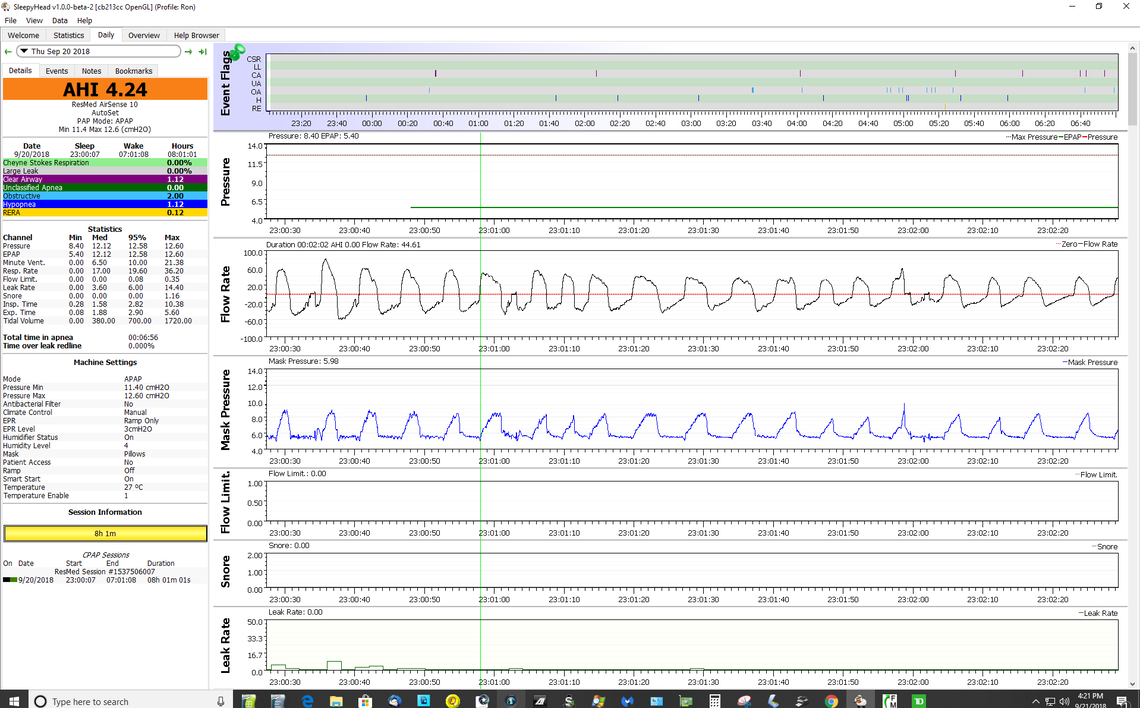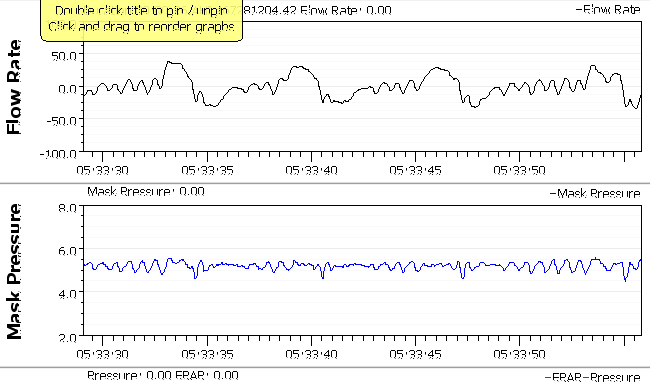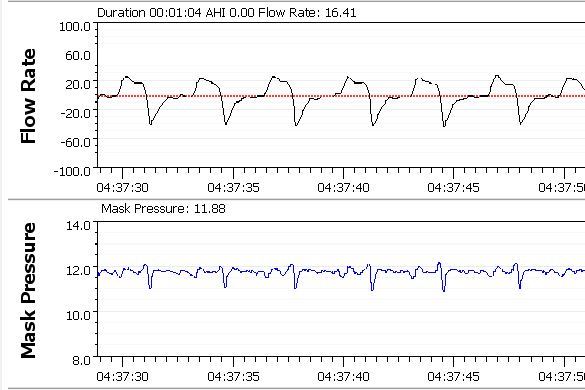Hello. Very happy to have found this forum. Thanks for everything you've put here.
I recently switched from a an old RemStar machine to an AirSense10 and I'm noticing a kind of "bounciness" in the pressure. I'm not talking about the quick pulses (like 4 per second) the machine sends out when it senses an obstruction. What I mean is that when I breathe in or out in a way that is not very slow and smooth, there's a kind of reverberation in the pressure. For example, if I exhale quickly it kind of goes SHSHSHShshshshshSHSHSHshshshshSHSHSHshshshshsh with those pressure pulses being a little less than one second apart. I can hear the pulses, feel them in my lungs, and feel and see the mask moving up and down, so I know it's not just a perception. I've turned off EPR and switched from auto to CPAP but it still happens. So I'm wondering if it's just something that's inherent in this machine, or if the machine is defective.
Have any of you noticed this happening with your machine? Thanks! Rodan (pressure: 6)
I use an AirSense 10 AutoSet, and I can't say I have noticed anything like that. My first thought was the EPR setting, but it seems you have ruled that out. And a pressure of 6 cm is very low. Just a stab in the dark, but what kind of mask are you using? Is there a chance your mask setting in the machine does not match the mask you are using? Also, have you tried SleepyHead to look at the detailed data that this machine captures? It should show what the pressure is doing. I will have a quick look at my SleepyHead results and post them so you can see what my machine is doing.
OK, here are a couple of screen shots which show the flow rate and mask pressure. The first one is right after the machine starts up, and I am breathing heavier and more irregularly than normal. You can see some jaggy noise in the mask pressure trace, probably indicating that the pressure control is hunting a bit trying to hold the desired pressure. The big wave is the EPR pressure response to inhale and exhale. I use EPR only during the Auto Ramp portion of the night, and let the machine shut it off when it detects I have gone to sleep. The second screen capture is a few minutes later after my breathing has become more regular (but I am still awake). You can see some jaggy noise here and there, but generally it is pretty smooth. In any case this is what you can see if you use SleepyHead to display your detailed results. It is a free download. All you have to do is take your SD card out of the machine and upload the data with a card reader. It should be easy for you to compare your mask pressure response to what I am getting.


Hi Sierra. Thanks for the quick response. I'm using a nasal mask and I did check that it was set for that, and it was. I've downloaded sleepyhead but will have to wait a few days for the card reader to arrive. It will be interesting to see if those pulses show up. I'll let you know when I get more info Thanks again!
There are two types of nasal masks; nasal, and nasal pillow. And there is the odd exception or two as to what setting you should use. Here is a link to ResMed's compatibility list and settings for masks. That is a long shot anyway.
For a reader I just use one of those small portable things that plugs into my USB slot.
I thought about this a little more and I also tried to make my machine act badly when I went to bed last night by taking sudden deeper inhales and exhales. Yes, I could hear the machine speeding up and slowing down following my breathing, but no really abnormal sounds. The normal sounds I hear from this machine almost sound like a second person sleeping a short distance away and breathing in sync with me. Have never felt or heard anything that sounded like pressure pulses.
My further thoughts were that you may have a defective machine. You said it is recent. Is it new or was it used? Has it done this since day one? About the only other things I could think of was some kind of flow restriction in your setup. I assume the filter is new and clean? Anything out the ordinary about the tubing? You could check the humidifier seals to see if they are located properly. There are some instructions in this Clinical Manual on how to inspect the humidifier seals. If you don't have this manual, it is worth downloading and keeping as a PDF.
If you find nothing, it may be worthwhile checking into what the warranty routine might be. There may be some time limits on getting a new exchange machine. I recently had a new ResMed DC to DC power supply go bad. The vendor was willing to ship me a new one immediately and gave me a return authorization to ship the old one back. They were very good about it. However, that may depend on your vendor...
Thanks for testing that and for the additional advice. Yes, I think it may be a defective machine. I got an appointment with respiratory therapist at the equipment supplier on Friday, so I should be able to get it figured out then. Thanks again!
Depending on the level of service they provide, they are probably getting your detailed data wirelessly, and should be able to see what is going on with the pressure. However, if you can get SleepyHead working then you will be able to see it also, and will be in a better negotiating position to get a new machine, assuming yours is defective.
When I had the power supply intermittent failure, I was dealing with an on line supplier in another province. I just sent them a copy of the screen capture that showed the machine stopping and starting all night, and they immediately agreed to ship me a new one. With a complete machine your supplier may have to get authorization from ResMed to replace it. Some evidence would be helpful.
Loving SleepyHead. Unless I'm misreading this, it looks like the fluctuations I'm talking about are recorded pretty well.

I don't suppose you get those kind of sawtooth lines when you zoom in, do you?
Thanks for the mask compatibility list. I checked it, and it was correct, so that's one more thing ruled out.
I did the override to set my mask pressure scale to have a range of 6 cm like yours. This is what I got during normal sleep with no EPR. There is definitely some noise to the pressure signal, and indication it does not react fast enough to keep pressure perfectly flat, but I do not see the control hunting type of response that you have. This hunting typically happens when the feedback gain is too high in a control loop. To my knowledge that is not an adjustable parameter in this model of a machine. I would agree that your unit seems to be defective, or out of adjustment. I would ask for a new machine.
About the only excuse I can think of for the machine is that your pressure is very low. 4 cm is the minimum, and perhaps the machine does not have as good a control of pressure at low values compared to higher values. That said, I still think defective. The pressure fluctuation in your unit seems to affect your flow rate. On mine it does not.

Helpful questions and responses should this happen to me, also AirSense 10. I tried sleepyhead but it doesn’’t support iPad, just computer. If you can send them a suggestion about tablets, I know it would be appreciated by many of us out here. Thanks.
The author of SleepyHead is Mark Watkins. The link below is to a SleepyHead forum where he participates, but has not made a comment for 5 months or so. He indicates he is taking a break from development work. I see others have suggested an Android version. In any case you could make a suggestion there.
So I tried another AirSense 10, and it did the same thing, and they didn't have any other options, so I kept my machine. That was a couple months ago. Since then, it has kind of mellowed out. There is still some pulsation in the pressure, but not enough to be a bother. Also, I've figured out that the pressure peaks are in time with my heartbeat — 2 peaks per heartbeat. So I suppose the phenomenon is caused by some kind of resonance between the sensors and actuators in the machine and little pressure waves created by the pulse in my lungs. Best theory I've got, anyway.
Thanks again for your help, Sierra!
Yes it could be your chest movement due to a strong heartbeat. I suspect the machine has more difficulty at low pressure maintaining a constant pressure. At higher pressures there is the stored energy effect of a compressed gas that potentially makes the machine more responsive, at least in the more flow, more pressure, direction.